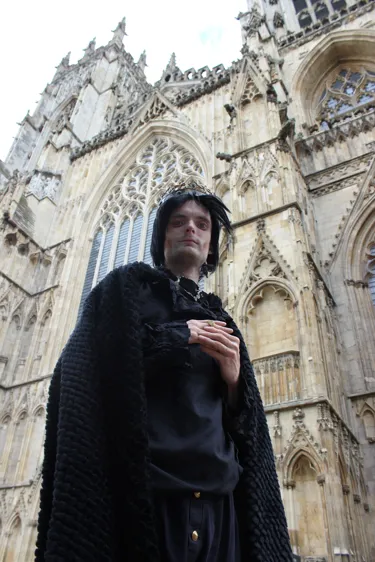Richard III & York
- Thursday 19th July 2018

‘Richard III is unique among medieval English kings in the extent of his connections with the north of England’.[i] Over a period of two decades from 1465 until his death in 1485, Richard, as duke of Gloucester and king of England, developed close links with the people of the region and the city of York in particular. From 1471 Richard ruled the north as Edward IV’s faithful lieutenant, dispensing justice and establishing a family home at Middleham castle in Wensleydale. The Tudor chronicler Edward Hall declared that Richard III ‘more loved, more esteemed and regarded the Northernmen than any subjects within his realm’, and that in return they ‘entirely loved and highly favoured him’.[ii] And the seventeenth century historian Sir George Buck wrote of Richard’s deep affection for ‘the goodly and ancient city of York, a place much esteemed and beloved of him’.[iii] Here are several examples illustrating Richard’s life in the north and his special relationship with the city of York:
- In 1476, following serious disturbances and unrest, Richard was given presents by a grateful council for persuading Edward IV to maintain York’s rights and liberties.[iv]
- In 1477 Richard and his wife joined the Corpus Christi Guild of York, revealing the intimate relationship which Richard had established with the men of York’.[v]
- In 1477 Richard successfully petitioned Edward IV to clear illegal fish-garths from the River Ouse, which had reduced the amount of fish available to ordinary people.[vi]
- In November 1477 Richard wrote from London to the council of York, referring to his imminent return north as ‘our next home coming’.[vii]
- Following Richard’s coronation in July 1483, the king’s secretary wrote to the city of York stating the ‘entire affection that his grace bears towards you and your worshipful city, for manifold your kind and loving deservings to his grace showed heretofore which his grace will never forget, and intendeth therefore so to do unto you that all the kings that ever reigned upon you did never so much.’[viii]
- On 8 September 1483, King Richard invested his son, Edward, as Prince of Wales in a magnificent ceremony in the palace of the archbishop of York.[ix]
- On 17 September 1483, Richard summoned the city councillors and many commoners to York Minster where he announced a substantial reduction in the annual tax paid to the crown.[x]
- In 1484 Richard established in York Minster an unprecedented chantry of 100 priests, indicating that the Minster was his intended place of burial.[xi]
- On 23 August 1485, following Richard’s death at the battle of Bosworth, the council minutes reported that ‘King Richard, late mercifully reigning upon us … was piteously slain and murdered to the great heaviness of this city’.[xii]
- In October 1485, two months after Richard’s death, the council minutes commemorated Richard as ‘the most famous prince of blessed memory’.[xiii]
Writing in the early seventeenth-century, Francis Bacon attributed the Yorkshire rebellion of 1489 to the fact that ‘the memory of King Richard was so strong that it lay like lees in the bottom of men’s hearts, and if the vessel was but stirred it would come up’.[xiv]
[i] C. Ross, Richard III (1981), p. 44
[ii] H. Ellis (ed.), Edward Hall’s Chronicle (1809), pp. 426, 442-3.
[iii] A.N. Kincaid (ed.), Sir George Buck, The History of King Richard the Third (Gloucester, 1982), p. 51.
[iv] D. Palliser, ‘Richard III and York’, in R. Horrox (ed.), Richard III and the North (University of Hull, 1986), p. 55.
[v] P.M. Kendall, Richard III (London, 1955), p. 132.
[vi] R. Davies (ed.), Extracts from the Municipal Records of the City of York, during the reigns of Edward IV, Edward V and Richard III (1843), pp. 89-90.
[vii] Davies (ed.), Records of the City of York, pp. 89-90.
[viii] Davies (ed.), Records of the City of York, pp. 163-164.
[ix] A. Compton Reeves, ‘King Richard III at York in Late Summer 1483’, The Ricardian, vol. xii, No 159, December 2002, pp. 549-550.
[x] Compton Reeves, ‘King Richard at York in Late Summer 1483’, p. 550.
[xi] A. J. Pollard, Richard III and the Princes in the Tower, p. 76.
[xii] Davies (ed.), Records of the City of York, p. 218.
[xiii] Palliser, ‘Richard III and York’, p.59.
[xiv] F. Bacon, The History of the reign of King Henry the Seventh (ed.) R. Lockyer (1971), p. 94.